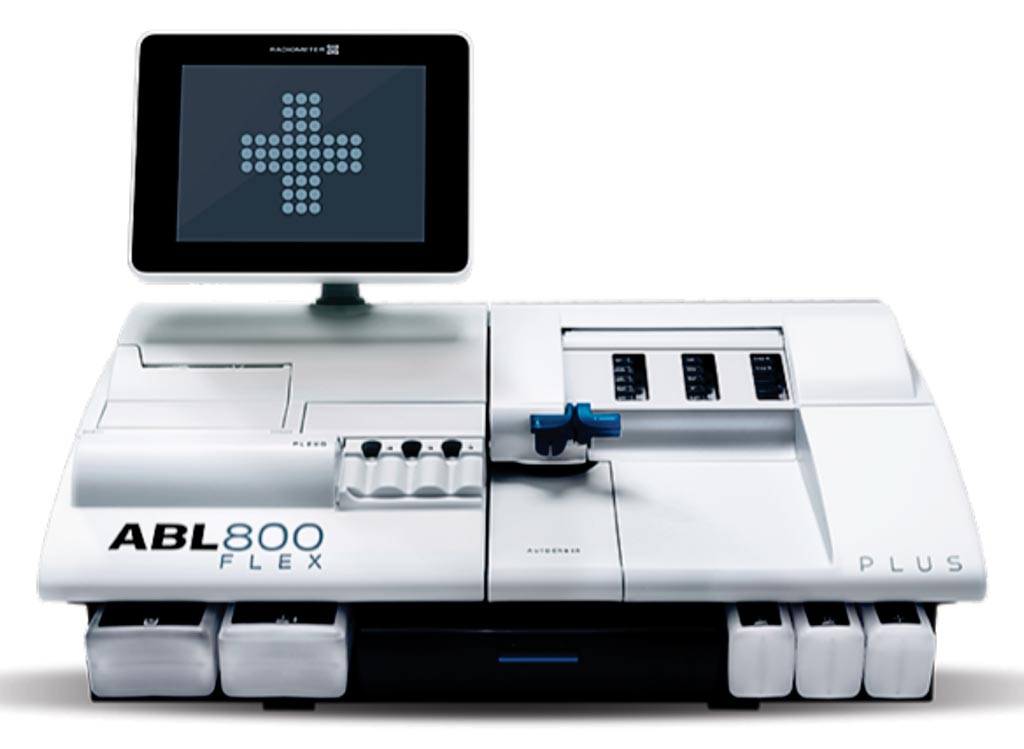Neutrophil‐Lymphocyte Ratio and Lactate Predict Mortality in Septic Patients
By LabMedica International staff writers
Posted on 23 Jul 2019
Sepsis is the primary cause of death from infection. It is also one of the leading causes of intensive care unit (ICU) mortality, despite early administration of antibiotics and hemodynamic management.Posted on 23 Jul 2019
Plasma biomarkers may have diagnostic, prognostic, and theranostic values, all of which are important factors influencing outcomes in patients with sepsis. White blood cell (WBC) enumeration has been identified as an important systemic inflammation marker. The neutrophil‐to‐lymphocyte ratio (NLR) is a rapid and simple parameter of systemic inflammation and stress.

Image: The ABL800 FLEX blood gas analyzer (Photo courtesy of Radiometer Medical).
Scientists at the Changai Hospital (Shanghai, China) and their colleagues conducted a prospective, observational study that included 63 nonsurgical and non-trauma adult patients with sepsis admitted to the Department of Critical Care Medicine from September 2016 to October 2018. Baseline characteristics of the patients including demographics (age and gender), comorbidities (cardiovascular disease, chronic lung disease, and diabetes, among others), and primary diagnosis were recorded. In addition, healthy subjects were assigned to a control group.
The team collected blood samples within 24 hours after diagnosis. Routine blood tests, blood gas analysis, and procalcitonin (PCT) concentrations were conducted in the hospital's central laboratory. Routine blood tests, including neutrophil count and lymphocyte count performed on a blood analyzer, XN9000, C-reactive protein (CRP) estimated by scattering nephelometry, and plasma PCT concentrations were measured using a time‐resolved amplified cryptate emission technology assay. Plasma lactate was evaluated on an ABL800 Flex.
The scientists reported that NLR and plasma lactate levels of the patients were significantly higher than those of control subjects: 19.44 (14.3‐34.53) versus 14.09 (8.17‐28.99), and 3.7 (3‐6.6) versus 2.72 (2.13‐4.3) ng/mL, respectively. There were no statistical differences in the concentrations of PCT and CRP between non-survivors and survivors. With an optimal cutoff of 14.08, the sensitivity and specificity of NLR for prediction of 28‐day mortality were 78.3% and 50%, respectively. The sensitivity and specificity of plasma lactate level to predict 28‐day mortality, at an optimal cutoff value of 2.99 mmol/L, were 82.6% and 55%, respectively.
The authors concluded that elevated NLR and lactate levels showed significant association with increased mortality in patients with sepsis. NLR and lactate may be important prognostic biomarkers to optimize treatment and manage patients. The study was published on July 2, 2019, in the Journal of Clinical Laboratory Analysis.
Related Links:
Changai Hospital














